ROSH HODESH
The celebration of each new month
The signature verse for Rosh Hodesh in Yesha’yahu (Isaiah) 66:23 relates to the world in the age to come, which will be the period following the return of Yeshua, when all the nations of the world will be called into the presence of YHVH for the weekly Shabbat and Rosh Hodesh.
What is Rosh Hodesh
Rosh Hodesh - literally means “head of the new” and is the first day of each new month. Once the correct day has been established for each new month, it is possible to determine the dates on which the
Seven Mo’adim will be observed. However, the day on which Rosh Hodesh will occur can only be accurately determined by using the Aviv (Scriptural) Calendar as prescribed in scripture. The Aviv Calendar came into existence while Isra’el were in Egypt. It began just 15 days before Isra’el departed on their exodus journey, on the day when Moshe (Moses) was told by YHVH in Sh’mot (Exodus) 12:1-2, that he was to start a new calendar, prescribed as follows:-
YHVH spoke to Moshe and Aharon in the land of Egypt; he said, “You are to begin your calendar with this month; it will be the first month of the year for you.
Origin of the Scriptural Calendar
While Moshe was told to begin a new calendar, we are not told on exactly which day YHVH spoke those words. So, how can the actual beginning day and the month be determined? Scripture itself gives a series of clues in the verses that follow. In the Book of Sh’mot there are three well defined reference points, which when taken together guide us back to the actual date of Rosh Hodesh.
The first clue is found in Sh’mot 13:3:-
Speak to all the assembly of Isra’el and say, ‘On the tenth day of this month, each man is to take a lamb or kid for his family, one per household.
- The second clue is found in Sh’mot 13:4:- “You are leaving today, in the month of Aviv.”
- The third clue is the actual day of departure from Egypt, as we are told in 12:17-18:-
You are to observe the festival of matzah, for on this very day I brought your divisions out of the land of Egypt. Therefore, you are to observe this day from generation to generation by a perpetual regulation. From the evening of the fourteenth day of the first month until the evening of the twenty-first day, you are to eat matzah.
The Month of Aviv
Together these three clues define the days during the month of Aviv, so we count back ten days from the first clue to find the 1st day.
The other aspect that needs to be determined is when the month of Aviv fell in relation to the yearly cycle. Again, the answer is found in Scripture, in Sh’mot 23:15:-
Keep the festival of matzah: for seven days, as I ordered you, you are to eat matzah at the time determined in the month of Aviv; for it was in that month that you left Egypt. No one is to appear before me empty-handed.
As verse 15 says the week of Matzah falls during the month of Aviv and we know the exodus occurred in that month, so we are only other thing we need is to define the meaning of the word Aviv. Aviv is defined as – “The stage in the growth of grain when the seeds have reached full size and are filled with starch but have not yet dried. During the plague of hail (Sh’mot 9:31), the barley was said to be [in the] aviv [stage] and the flax in bud. Both crops were destroyed as a result of that plague. Hence, the exodus from Egypt can be determined as having occurred during the springtime as that is when barley becomes Aviv in Isra’el. So, when we relate all these details to the Julian or Gregorian Calendars, we see that it was around the time of the Spring Equinox, which occurs on 20th March.
It is well documented, that the wild barley in Isra’el reaches the Aviv stage close to the Spring Equinox. So, once the majority of the wild barley has reached the Aviv stage, it is time to look for the first visible sliver of the new moon. Once the new moon is sighted, that becomes “Rosh Hodesh - Aviv.”
Sanhedrin and the Aviv Calendar
Historical records from Judaism record that while the nation of Isra’el was in Eretz-Yisra’el, the Sanhedrin used to announce the new month upon the testimony of two reliable witnesses who sighted the first sliver of the moon just after sunset on what was to be the first day of the new month.
Therefore, on the basis of the scriptural and historical records, we as Talmidim of Yeshua, embrace the Aviv (Scriptural) Calendar as the only realistic means by which the dates for the Seven Mo’adim can be accurately determined. Regrettably, that often puts us out of sequence by one or two days with Rabbinical Judaism who adhere to the conjunction of the moon as the means for determining Rosh Hodesh.
"This essay was written by Graeme Purdie – Founder of Talmidei Yeshua Messianic Ministry of NZ and may only be shared in full and must include this citation at all times. All scriptural references, unless stated otherwise, have been taken from the Complete Jewish Bible by David H Stern. Copyright © 1998. All rights reserved. Used by permission of Messianic Jewish Publishers, 6120 Day Long Lane, Clarksville, MD 21029 www.messianicjewish.net."

